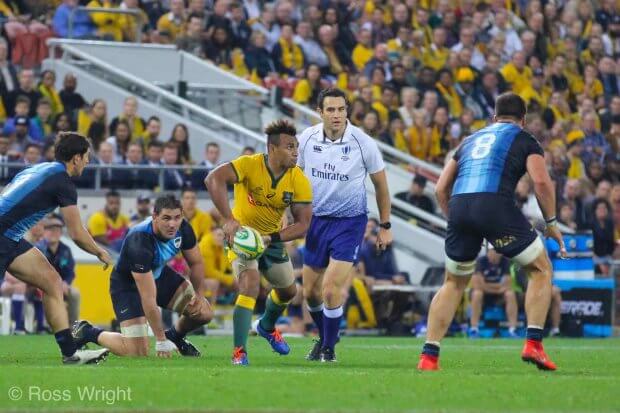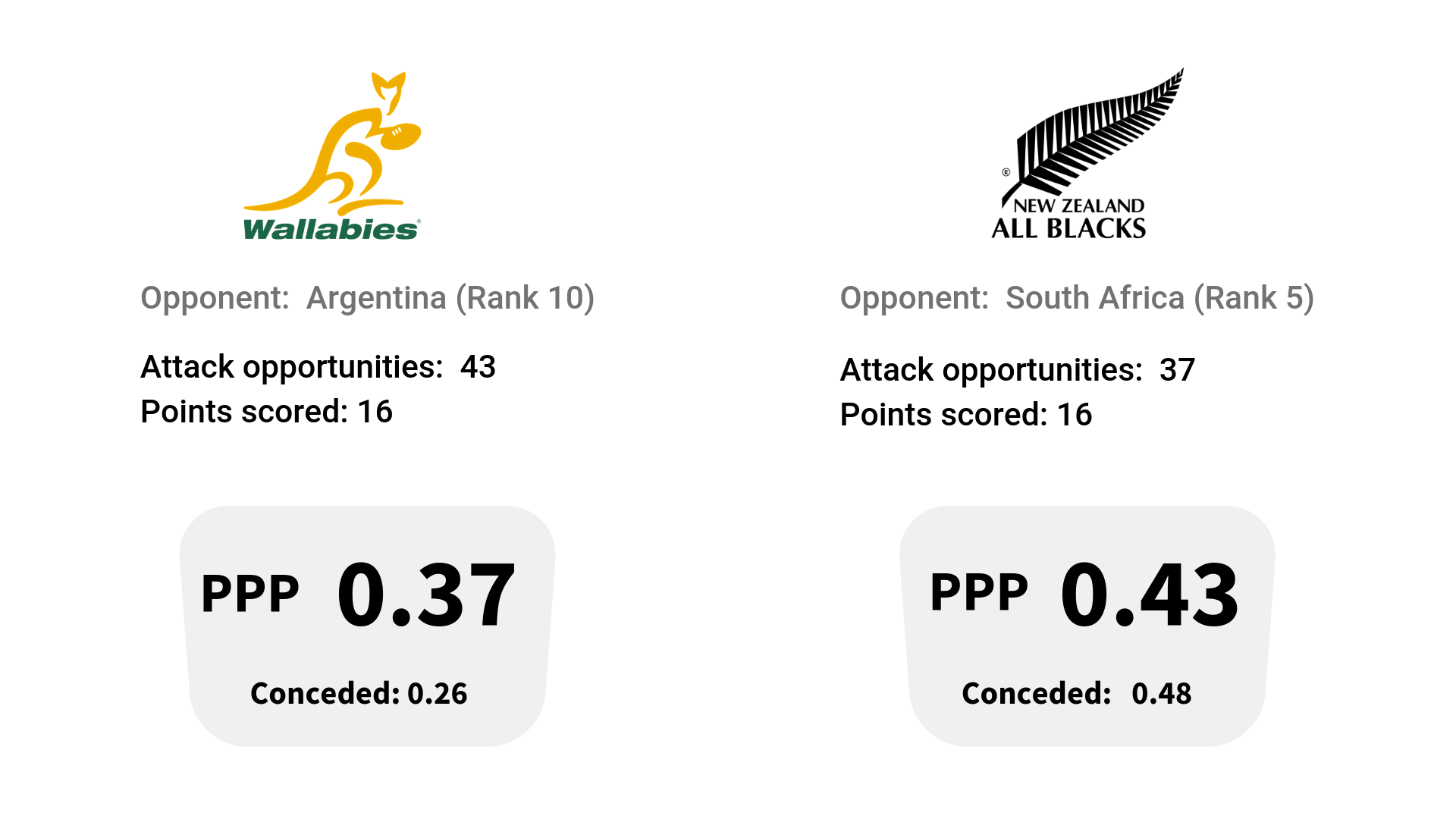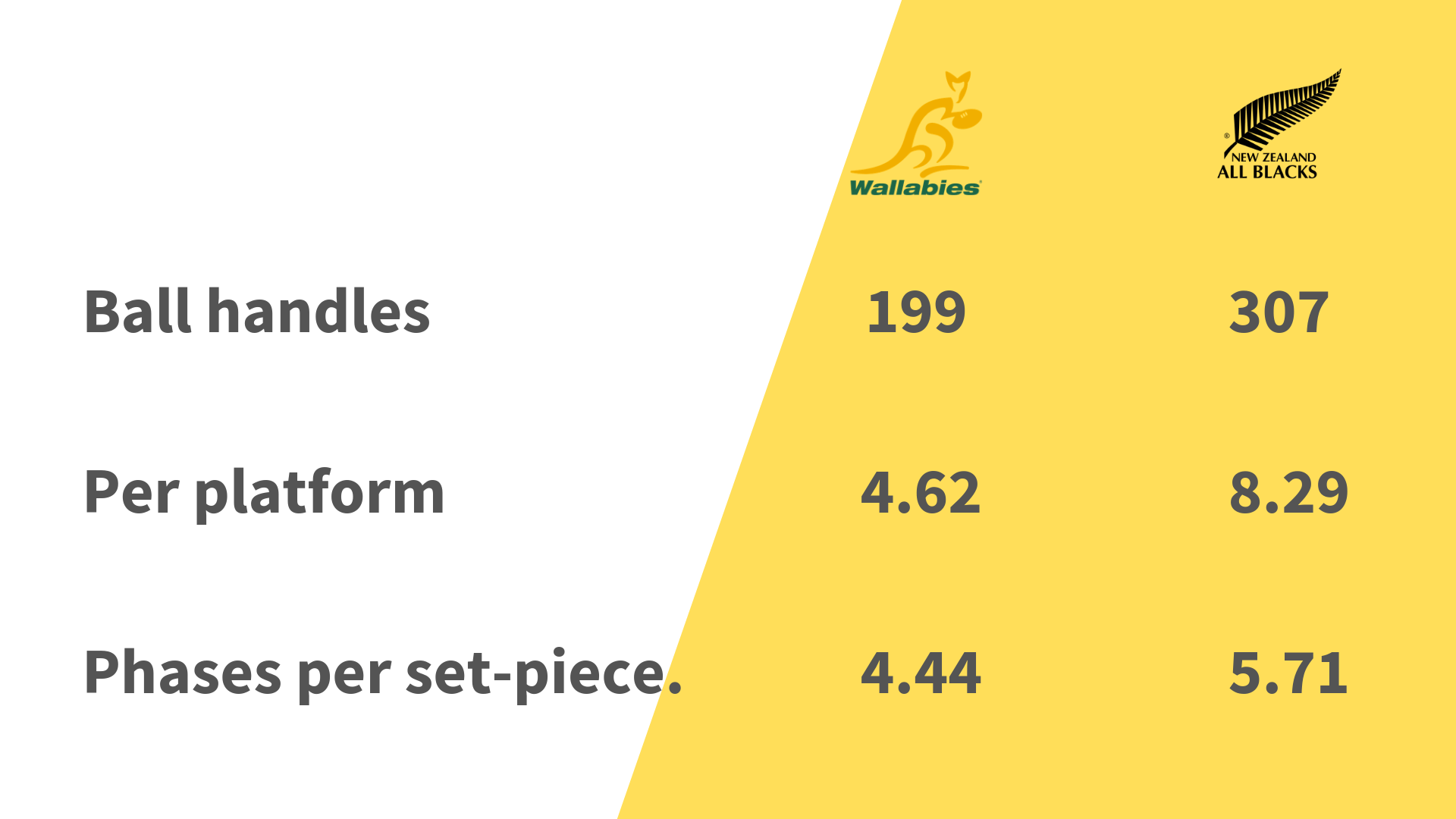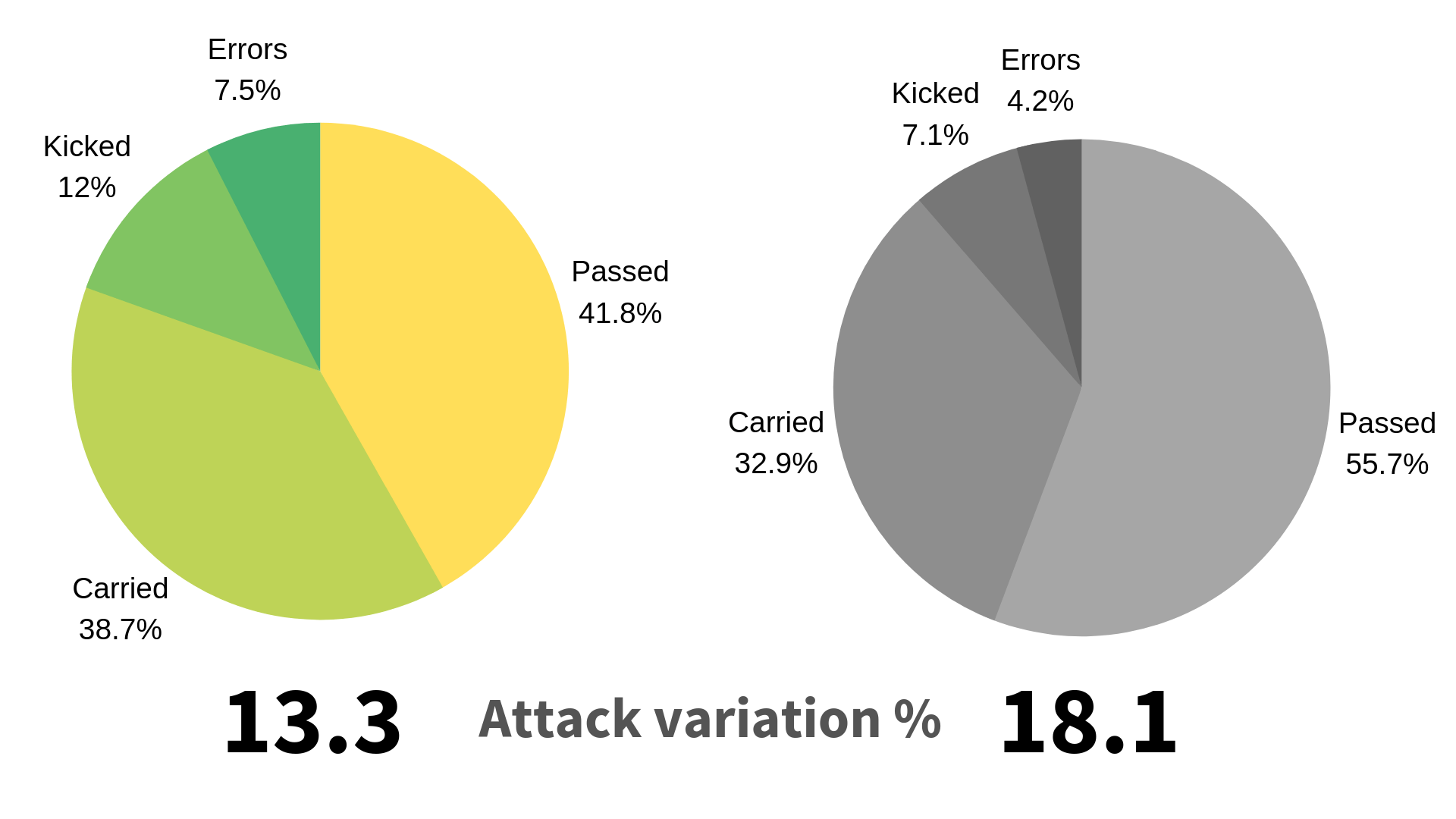The following is a range of statistics that shed some light on the Wallaby performance last night. To put the data into context I compare some metrics with the All Black’s performance against South Africa.
Both teams scored 16 points, even though Australia had 43 attack opportunities against New Zealand’s 37, so the ‘points per platform’ metric is easy to calculate:
Point per platform explained
Often teams play poorly, yet still win. Other times they lose while seemingly playing a great game. To better grade performance, we look at the amount of attack opportunities you create and how many points you score from them.
An opportunity is when you win the ball off a scrum, line-out or kick-off, or when you win a turnover or a penalty, and being able to score points when you have the opportunity is pretty much the whole point right?
Australia and New Zealand (as well as Argentina and South Africa) performed miserably this weekend. The coaches will say how they are ‘trying new things’, and we can further mitigate these results by virtue of the games having no consequence. Either way, yesterday’s games were of an extremely poor standard, and I know this because teams gave each other far too many platforms to play off. All teams had more than 32 attack platforms, while the average is 26.8 for the professional games I measured so far this season, many of which were Super Rugby games, which are for the most part carnivals, not tightly contested do-or die affairs.
Scoring off set-pieces
It takes Australia almost 3 attack platforms to score 1 point, while Argentina needs 4 platforms to score a point. South Africa and New Zealand requires a bit over 2 platforms to score 1 point. Think about this the next time your team trails by 14 points! Australia would require, based on yesterday’s performance, almost 37 platforms just to break even – as much as you rarely get in any game, leave alone tight test matches.
Australia handled the ball half as much per platform as the All Black’s did, and managed to set up less phases each time they could attack off set-pieces. Now we look at how we used our possession:
You may argue that our 15 handling errors (yes 15!) prevented us from getting more movement on the ball and more momentum. However New Zealand also made a crazy 13 handling errors.
- Side note: during game 2 and 3 of Origin 2019, only 2 handling errors (1 forward pass and 1 knock on) occured in 160 minutes of rugby league. In 160 minutes of union yesterday, the 4 supposed southern superpowers made 43 handling errors.
We are playing route 1.
The data instead points to a team who is trying a very direct approach, seen clearest in the fact that we pass the ball roughly as many times as we carry it directly into contact. I am not sure that the strength of Australian rugby lies in a direct approach, but in fairness, we knocked on 5 balls in contact while on the verge of a line-break.
Our attack variation % is too low. Attack variation is the percentage the times we play wide instead of narrow ; or where we kick to regather the ball as opposed to kicking it to get out of trouble (or win territory). We kicked 19 times to gain territory, and only 5 times to regather possession. We used the maul only twice.
By contrast, the Crusaders kicked to regather possession on average 18 times a game this year. The All Blacks only did this 8 times yesterday, which is baffling. However of particular relevance is the fact that the Kiwi’s played to a man in the tram line (5 m line from the side-line) 16 times. We chose this option on 9 occasions. South Africa and Argentina managed this only 4 times each.
What do we need to see in Perth?
Looking purely at the data, we will need to find a myriad of ways to start converting opportunities into points. I want us to kick more and vary our kicks. We will need to be mindful of the All-Blacks newfound love of playing in the tramline. Our line-out functioned at 77% and our scrum at 100%. We turned over the ball on 7 occasions (knocking the ball on directly afterwards 3 times) and won enough penalties.
In short, we are creating enough platforms. What we do off first phase ball is going to define our World Cup campaign. Australia has long been known as an innovative rugby country, and the fact that we scored the most line-breaks for 2 consecutive weeks shows that we are not total idiots.
We have 2 weeks to get this right:
> More innovation off first phase
> More kick variation
> Better handling skills
Brendon Shields is the founder of @rugbycology – a company that uses Google tools to create user-friendly and affordable coaching solutions for rugby union clubs and schools.





